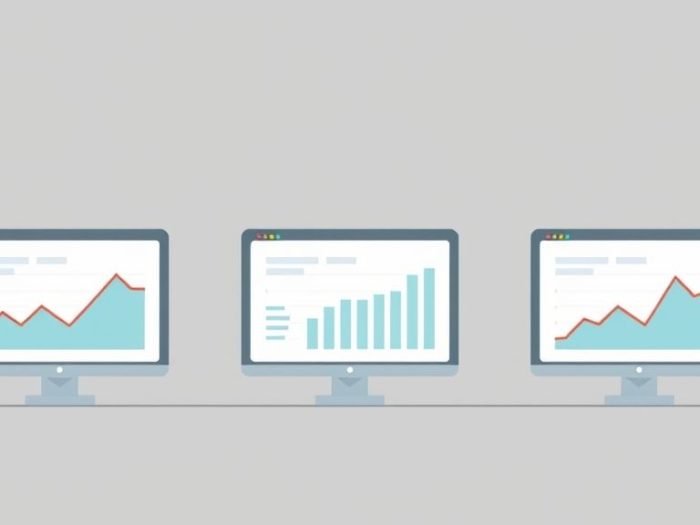Traders use various methods to test their trading strategies. Backtesting, paper trading, and
live trading each offer different ways to evaluate a strategy, but the results can vary
significantly. This article explores the key differences in results between these methods and
what traders should expect.
Understanding the Trading Methods
1. Backtesting
Backtesting involves simulating a trading strategy on historical market data. The strategy’s rules
are applied to past price movements to see how it would have performed.
2. Paper Trading
Paper trading allows you to trade in a simulated environment using virtual money. You execute
trades in real-time, but without risking actual capital.
3. Live Trading
Live trading involves trading with real money in the live market.
Key Differences in Results
The results obtained from these methods can differ substantially due to several factors:
1. Data Accuracy
- Backtesting: Relies on historical data, which may not perfectly reflect future market conditions.
- Paper Trading: Uses real-time market data, but there might be slight discrepancies.
- Live Trading: Uses actual market data, but execution can be affected by slippage and other factors.
2. Transaction Costs
- Backtesting: Often simplifies or excludes transaction costs like commissions and slippage.
- Paper Trading: May simulate transaction costs but doesn’t accurately reflect their impact.
- Live Trading: Includes real transaction costs, which can significantly affect profitability.
3. Execution
- Backtesting: Assumes perfect execution at the desired price, which is rarely the case in reality.
- Paper Trading: Execution is simulated and doesn’t account for slippage or delays.
- Live Trading: Execution is subject to market conditions, slippage, and potential delays.
4. Emotional Factors
- Backtesting: Removes emotional influences entirely, as it’s a simulation.
- Paper Trading: Reduces emotional involvement but doesn’t fully replicate the psychological pressure of live trading.
- Live Trading: Involves real money and significant emotional pressure, which can lead to poor decision-making.
5. Market Conditions
- Backtesting: Tests a strategy on historical data, which may not be representative of future market behavior.
- Paper Trading: Occurs in real-time but doesn’t account for market volatility or liquidity issues that can arise in live trading.
- Live Trading: Exposes you to the full range of real-world market conditions.
What to Expect from Each Method
- Backtesting: Provides an initial assessment of a strategy’s potential but should not be the sole basis for live trading.
- Paper Trading: Helps you familiarize yourself with a platform and practice execution but doesn’t fully prepare you for the emotional challenges and real-world costs of live trading.
- Live Trading: The ultimate test of your strategy and trading skills. Expect results to differ from backtesting and paper trading.
Conclusion
Backtesting, paper trading, and live trading each serve a purpose in the trading process. Backtesting
provides a starting point, paper trading offers practice, and live trading is the true test.
Understanding the differences in results and managing expectations is crucial for successful trading.
Related Keywords
Backtesting, paper trading, live trading, trading simulation, trading strategy, trading results,
trading performance, trading risk, trading psychology, options trading.
Frequently Asked Questions (FAQ)
1. What is backtesting?
Backtesting involves simulating a trading strategy on historical market data to see how it would have performed in the past.
2. What is paper trading?
Paper trading is simulated trading using virtual money in a real-time market environment.
3. What is live trading?
Live trading involves trading with real money in the live market.
4. How does data accuracy differ between these methods?
Backtesting uses historical data, paper trading uses real-time data, and live trading uses actual market data, with potential discrepancies and influences from slippage.
5. How are transaction costs handled in backtesting, paper trading, and live trading?
Backtesting often simplifies or excludes transaction costs, paper trading may simulate them, and live trading involves real costs.
6. How does execution differ between these methods?
Backtesting assumes perfect execution, paper trading simulates it, and live trading is subject to market conditions and slippage.
7. How do emotional factors influence trading results?
Backtesting removes emotions, paper trading reduces them, and live trading involves significant emotional pressure.
8. How do market conditions affect the results of each method?
Backtesting uses historical data, paper trading occurs in real-time, and live trading exposes you to the full range of market conditions.
9. What is the purpose of each trading method?
Backtesting provides an initial assessment, paper trading offers practice, and live trading is the ultimate test of your strategy.
10. Should I expect the same results in live trading as in backtesting?
No, you should expect results to differ, often significantly, between backtesting, paper trading, and live trading.



